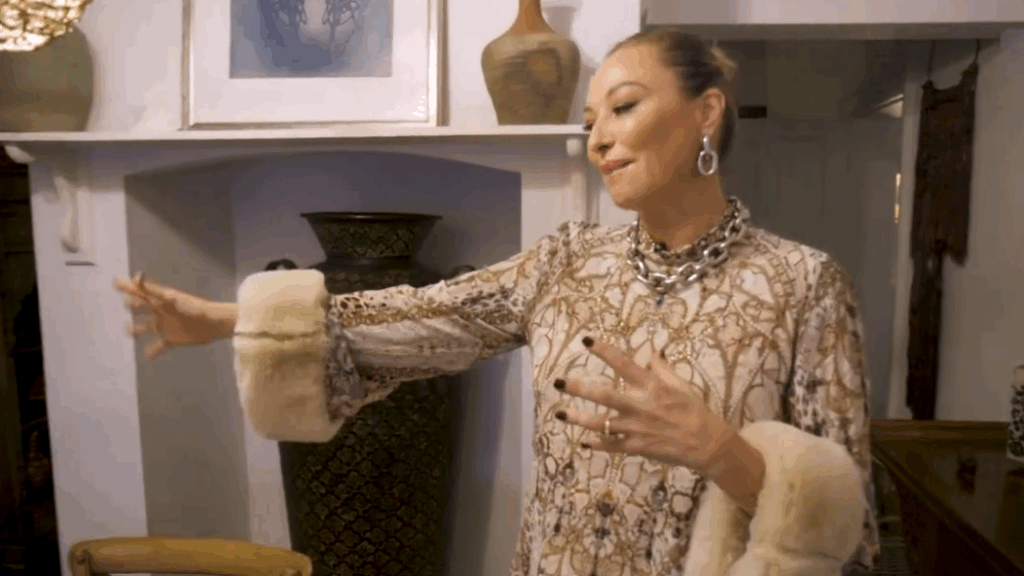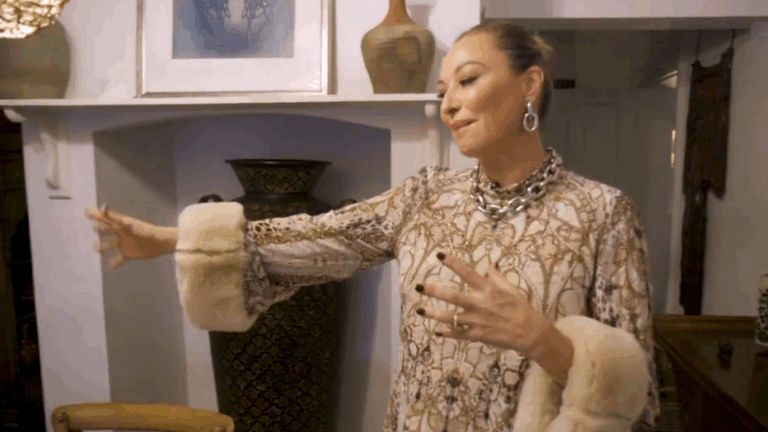The arrival of her daughter Luna was both a miracle and a watershed in Camilla Franks’ life. What should have been a time of maternal happiness swiftly turned into a struggle for survival. Only months after Luna was born, Camilla received a stage-three breast cancer diagnosis, which abruptly forced her to face not only her own mortality but also her worst fears as a new mother. The conflict between the possibility of death and new life produced a unique emotional upheaval that few people experience, much less endure in public.
Camilla, accustomed to turning textiles into fantasies, now had to rethink her world. Fittings were replaced by chemotherapy sessions, and her most severe accessory was a double mastectomy. However, in the midst of that chaos, Luna’s presence provided something that no medical intervention could: a fierce and maternal will to live. According to Camilla, the fear she experienced was intensely physical and moved through her bones. However, Luna was motivated to fight back by her tiny heartbeat, which was nestled against her chest.
Camilla demonstrated a strength that is frequently disregarded by enduring months of physically taxing treatment while caring for a newborn. Not ostentatious, not arrogant—just quietly strong. “You can’t hang onto trivial things, especially during those tough times,” she said. Her purpose was reshaped by that realization, which also helped her body recover.
Camilla Franks – Personal and Professional Details
| Attribute | Details |
|---|---|
| Full Name | Camilla Franks |
| Date of Birth | March 14, 1976 |
| Age | 49 (as of 2025) |
| Daughter’s Name | Luna Gypsy Jones |
| Partner | JP Jones (fiancé, later husband) |
| Nationality | Australian |
| Occupation | Fashion Designer, Founder of CAMILLA |
| Known For | Colorful kaftans, bold bohemian prints, The Celebrity Apprentice |
| Health History | Diagnosed with stage-three breast cancer in 2018 |
| Website Reference | Daily Mail |

This metamorphosis—of identity and fashion—did not happen overnight. More female creatives have started using their own experiences to reshape their brands in recent years. Because of her emotional transparency, Camilla is positioned alongside powerful women who have used their platforms to humanize illness, such as Christina Applegate and Selma Blair. The way Luna is still deeply entwined with each stage of Camilla’s development sets her apart. Camilla invites her audience to share in every victory and tear, unlike other fashion icons who keep their personal lives and careers apart.
In the midst of the pandemic, when susceptibility was already elevated, Camilla used her voice to discuss a topic that is rarely discussed: the loss of fertility. She lamented not only the procedure but also the future children she would not be able to have after her fallopian tubes were removed. Her frank Instagram post about her heartbreak read like a letter to all women who have experienced similar loss. She wrote, “I lie here with a broken heart.” “I grieve for children I can no longer support.” That degree of candor is especially novel in a time when perfection is curated.
In the meantime, Luna quietly adapted to her dual roles as muse and daughter. She started accompanying her mother at important fashion events when she was just three years old, frequently wearing matching outfits that exuded happiness and unity. Wearing Camilla’s distinctive bohemian prints, their appearance at the premiere of The Little Mermaid felt less like a publicity stunt and more like a celebration of life, which had almost passed them by.
Camilla has changed the fashion industry’s perception of family by incorporating motherhood so thoroughly into her brand. It’s neither a secret nor a sacrifice anymore. It’s crucial to Camilla. Instead of being a background character, Luna travels with her mother, earning stamps on her passport and learning how to pose with the same style that characterizes her mother’s design philosophy. Their nomadic way of life, which spans Australia and Wales, seems incredibly dependable as a family routine and a representation of equilibrium.
Camilla maintains her grounding despite everything. Her thoughts are emotionally nuanced rather than prepared. In a recent interview, she stated, “There are times when you have to let go of who you were in order to become the person you need to be.” This sentiment is particularly relevant to women who are reconstructing their identities following trauma. Her story has had a remarkably powerful impact and is now used as a guide for navigating personal reinvention.
Her regrets have a purpose, too. She freely acknowledged that she had made a mistake, driven by her desire to advance in her career, by not freezing her eggs. Fertility planning is frequently neglected by early-stage business owners, particularly women. Camilla’s admission sends a very clear message to young women who are juggling biology and ambition.
Luna is still at the center of everything, though. “My life was saved by her,” Camilla admitted. The phrase may sound poetic, but it also remarkably echoes what many survivors say about their kids. In times when hope seems far away, love—especially maternal love—has a way of keeping people grounded. In Camilla’s case, the anchor was strong enough to keep her fighting but small enough to fit in her arms.
Camilla’s emotional development has turned into a surprising advantage for the company. Previously characterized by color and escape, her brand is now also influenced by honesty and tenacity. Each kaftan has layers, both in terms of fabric and meaning. This change is in line with the current desires of fashion buyers, which are heart, authenticity, and narrative. Few people can do what Camilla has done by transforming her suffering into something so adaptable, both personally and professionally. In addition to surviving, she has changed.


